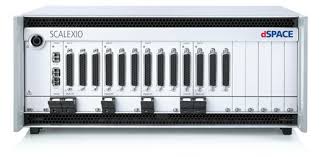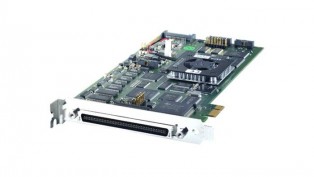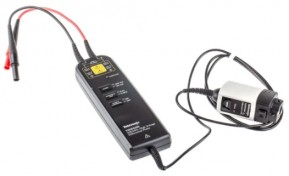Real-time Power and Control System (RPCS) Laboratory
Here in the RPCS laboratory, we focus on solving complex problems in mobility electrification, energy networks, energy efficiency and reduction of harmful gases. We look into these energy problems in the context of cyber-physical systems (CPS) problem. We are specifically interested in the feedback systems where we employ networked or distributed control, adaptive and predictive control, intelligent control, and real-time (time-constrained) control for power and energy management from component-level including batteries, wideband-gap power electronics to system-level including microgrids/nanogrids and buildings. In the context of the feedback system, we also employ wireless sensing using novel sensing technologies, and multi-sensory fusion algorithms to achieve reliability, flexibility and accuracy.
We provide special capability in our lab for hardware-in-the-loop (HIL) and rapid control prototyping (RCP) for testing and evaluation of the wideband-gap power electronics, microgrids and battery management systems in a real-time scenario. The real-time simulations using the laboratory state-of-the-art equipment can significantly reduce the cost of the system development for industrial applications and product development.
 SCLALEXIO – a powerful Multi-core and versatile hardware-in-the-loop (HIL) simulator that provides highly flexible channels, and a specialized I/O hardware. Control Desk Next Generation software let real-time simulation of Matlab/Simulink models, e.g. dSPACE Electrical Power Systems Simulation Package allows the real-time simulation of electrical models developed in SimPowerSystems.
SCLALEXIO – a powerful Multi-core and versatile hardware-in-the-loop (HIL) simulator that provides highly flexible channels, and a specialized I/O hardware. Control Desk Next Generation software let real-time simulation of Matlab/Simulink models, e.g. dSPACE Electrical Power Systems Simulation Package allows the real-time simulation of electrical models developed in SimPowerSystems.
 Micro Lab Box - a small all-in-one development system for rapid control prototyping (RCP). It comes with over 100 channels of different I/O types and a combination of real-time processor and FPGA functionality. Close- loop and open-loop control algorithms can be developed in Matlab/Simulink and implemented on the freely programmable FPGA of the MicroLabBox to achieve the fastest possible control sampling rate. RTI E-Motor Control block set is used in combination with FPGA programming blockset to achieve the fastest possible control sampling rate of 16MHz for motor control.
Micro Lab Box - a small all-in-one development system for rapid control prototyping (RCP). It comes with over 100 channels of different I/O types and a combination of real-time processor and FPGA functionality. Close- loop and open-loop control algorithms can be developed in Matlab/Simulink and implemented on the freely programmable FPGA of the MicroLabBox to achieve the fastest possible control sampling rate. RTI E-Motor Control block set is used in combination with FPGA programming blockset to achieve the fastest possible control sampling rate of 16MHz for motor control.
 DS1104 R&D Controller Board – a single PCI board system for real-time control development and rapid control prototyping (RCP). Currently, two PCs in the lab have this board installed and can be used as real-time hardware for smaller control development in power electronics, electrical machines, drives, and robotics.
DS1104 R&D Controller Board – a single PCI board system for real-time control development and rapid control prototyping (RCP). Currently, two PCs in the lab have this board installed and can be used as real-time hardware for smaller control development in power electronics, electrical machines, drives, and robotics.
 LiB Temperature And Humidity Test Chamber:
LiB Temperature And Humidity Test Chamber:
Internal dimensions(mm): 400D*500W*500H
Exterior dimensions(mm) : 860D*1050W*1620H
Useful capacity: 100 Liters
Temperature range : -40°C ~ +150°C
Temperature fluctuations: ±0.5°C
Temperature uniformity: ±2.0°C
Temperature sensor: PT100 A class sensor
Humidity range: 20% ~ 98% RH, adjustable
Humidity deviation: ± 2.5%RH
Heating rate: 3°C / min
Cooling rate: 1°C / min
Heating System: Independent nichrome electronic
Cooling system: France TECUMSEH Compressors
Internal material: SUS304 stainless steel
External material: steel plate with protective coating
Power supply: AC380V 50Hz 3Phase

NEWARE battery testing system:
Model: BTS8000-5V50A-8CH
8 channels with individual temperature sensor
AC220V ±10% input.
Voltage: 0.5% – 100% FSR (5V to 60V)
Current: 0.5% – 100% FSR (50A)
16-bit Resolution
Data Acquisition:
Frequency: 100Hz,
Time Interval:10ms to 60000s,
Voltage Interval: 0.2% -100% FSR,
Current Interval: 0.2% -100% FSR
Response Time: ≤10ms. 1ms for current lower than 12A
Operation Mode:
Charge: Constant Current, Constant Voltage, Constant Power
Discharge: Constant Current, Constant Power, Constant Resistance Simulation: Constant Current, Constant Power
End Conditions: Voltage, Current, Step Time, Capacity, Energy and other defined variables

1500W TDK-Lambda GEN150V-10A DC power supply:
Programmable
High Power Density: 1500W in 1U
Input (85~265Vac Continuous, single phase,47/63Hz)
Active Power Factor Correction (0.99 typical)
Output Voltage up to 600V, Current up to 200A
Built-in RS-232/RS-485 Interface Standard
Last-Setting Memory
Global Commands for Serial RS-232/RS-485 Interface
Front Panel Lock selectable from Front Panel or Software
High Resolution 16 bit ADCs & DACs
Reliable Encoders for Voltage and Current Adjustment
Constant Voltage/Constant Current auto-crossover
Independent Remote ON/OFF and Remote Enable/Disable
External Analog Programming and Monitoring (0-5V & 0-10V)
Optional Interfaces

1200W DC Electronic Load:
EA-EL 9000 B Series, 1.2 kW,
0 VDC ~ 360 VDC
40 A
Programmable

Voltage Probe
Tektronix THDP0200 Oscilloscope Probe
Probe Type: Differential
High Voltage 200MHz 1.5kV 1:50, 1:500

Current Probe
Pico Technology TA167 200A/2000A AC/DC
BNC Connector
Contact Information
The RPCS Laboratory is located in the Engineering Building on the Mile End campus in London. The laboratory can be easily reached by using the London Underground system (Central line – Mile End station, Hammersmith & City Line and District Line – Stepney Green station).
A map of the Campus and travel information can be found on the main college website.
For enquires about hire and use of the RPCS facility, please contact:
Dr Kamyar Mehran
Director of RPCS Laboratory
Email: k.mehran@qmul.ac.uk
Tel: +44 (0)207 882 6123
Dr. Max Munoz
Antenna Research Laboratory Manager
School of Electronic Engineering and Computer Science
Queen Mary University of London
Mile End Road
London, E1 4NS, UK
Email: m.o.munoztorrico@qmul.ac.uk
Tel: +44 (0)20 7882 5521 or +44 (0)20 7882 7146
Fax: +44 (0)20 7882 7997

